 | ÐлекÑÑоннÑй компоненÑ: IRF7207 | СкаÑаÑÑ:  PDF PDF  ZIP ZIP |
Äîêóìåíòàöèÿ è îïèñàíèÿ www.docs.chipfind.ru
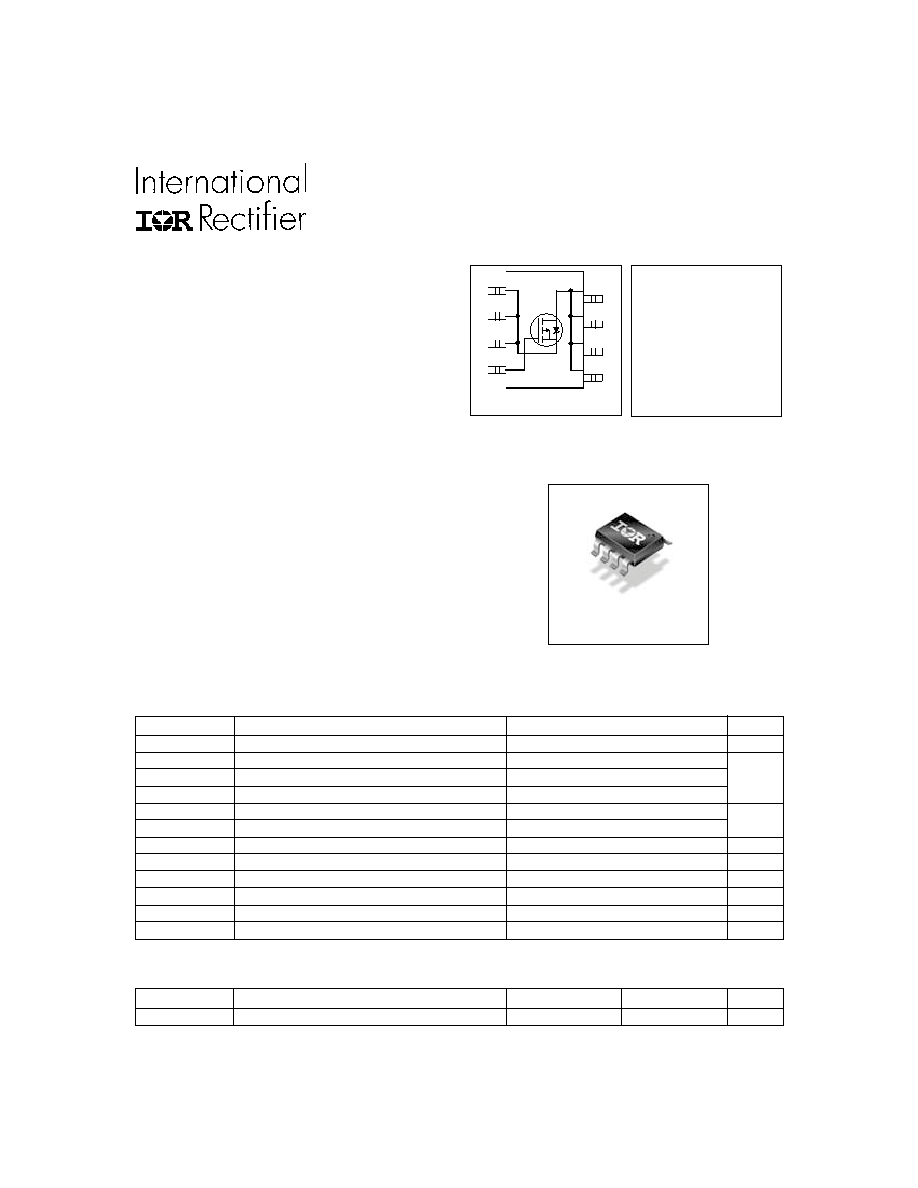
HEXFET
®
Power MOSFET
Fifth Generation HEXFET
®
Power MOSFETs from
International Rectifier utilize advanced processing
techniques to achieve extremely low on-resistance
per silicon area. This benefit, combined with the fast
switching speed and ruggedized device design that
HEXFET power MOSFETs are well known for, provides
the designer with an extremely efficient and reliable
device for use in a wide variety of applications.
The SO-8 has been modified through a customized
leadframe for enhanced thermal characteristics and
multiple-die capability making it ideal in a variety of
power applications. With these improvements, multiple
devices can be used in an application with dramatically
reduced board space. The package is designed for
vapor phase, infra red, or wave soldering techniques.
Power dissipation of greater than 0.8W is possible in a
typical PCB mount application.
6/5/00
Description
l
Generation 5 Technology
l
P-Channel Mosfet
l
Surface Mount
l
Available in Tape & Reel
l
Dynamic dv/dt Rating
l
Fast Switching
V
DSS
= -20V
R
DS(on)
= 0.06
IRF7207
T op V ie w
8
1
2
3
4
5
6
7
D
D
D
G
S
A
D
S
S
www.irf.com
1
Parameter
Max.
Units
V
DS
Drain- Source Voltage
-20
V
I
D
@ T
C
= 25°C
Continuous Drain Current, V
GS
@ -4.5V
-5.4
I
D
@ T
C
= 70°C
Continuous Drain Current, V
GS
@ -4.5V
-4.3
A
I
DM
Pulsed Drain Current
-43
P
D
@T
C
= 25°C
Power Dissipation
2.5
P
D
@T
C
= 70°C
Power Dissipation
1.6
Linear Derating Factor
0.02
W/°C
V
GS
Gate-to-Source Voltage
± 12
V
V
GSM
Gate-to-Source Voltage Single Pulse tp<10µs
-16
V
E
AS
Single Pulse Avalanche Energy
140
dv/dt
Peak Diode Recovery dv/dt
-5.0
V/ns
T
J,
T
STG
Junction and Storage Temperature Range
-55 to + 150
°C
Parameter
Typ.
Max.
Units
R
JA
Maximum Junction-to-Ambient
50
°C/W
Thermal Resistance
Absolute Maximum Ratings
W
SO-8
PD - 91879A
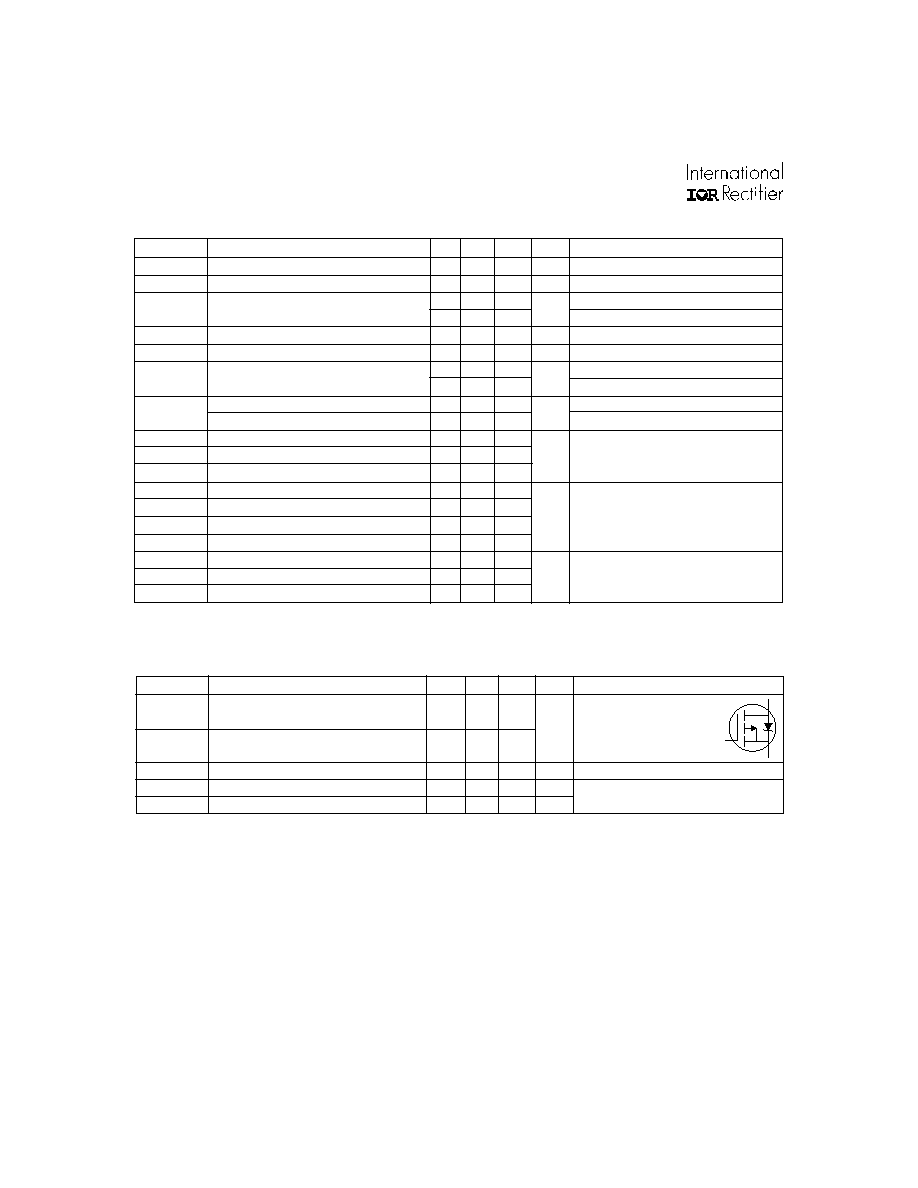
IRF7207
2
www.irf.com
Parameter
Min. Typ. Max. Units
Conditions
V
(BR)DSS
Drain-to-Source Breakdown Voltage
-20
V
V
GS
= 0V, I
D
= -250µA
V
(BR)DSS
/
T
J
Breakdown Voltage Temp. Coefficient
-0.011
V/°C
Reference to 25°C, I
D
= -1mA
0.06
V
GS
= -4.5V, I
D
= -5.4A
0.10
V
GS
= -2.7V, I
D
= -2.7A
V
GS(th)
Gate Threshold Voltage
-0.7
V
V
DS
= V
GS
, I
D
= -250µA
g
fs
Forward Transconductance
8.3
S
V
DS
= -10V, I
D
= -5.4A
-1.0
V
DS
= -16V, V
GS
= 0V
-25
V
DS
= -16V, V
GS
= 0V, T
J
= 125°C
Gate-to-Source Forward Leakage
-100
V
GS
= 12V
Gate-to-Source Reverse Leakage
100
V
GS
= -12V
Q
g
Total Gate Charge
15
22
I
D
= -5.4A
Q
gs
Gate-to-Source Charge
2.2
3.3
nC
V
DS
= -10V
Q
gd
Gate-to-Drain ("Miller") Charge
5.7
8.6
V
GS
= -4.5V,
t
d(on)
Turn-On Delay Time
11
V
DD
= -10V
t
r
Rise Time
24
I
D
= -1.0A
t
d(off)
Turn-Off Delay Time
43
R
G
= 6.0
t
f
Fall Time
41
R
D
= 10
,
C
iss
Input Capacitance
780
V
GS
= 0V
C
oss
Output Capacitance
410
pF
V
DS
= -15V
C
rss
Reverse Transfer Capacitance
200
= 1.0MHz,
Electrical Characteristics @ T
J
= 25°C (unless otherwise specified)
I
GSS
µA
R
DS(on)
Static Drain-to-Source On-Resistance
I
DSS
Drain-to-Source Leakage Current
nA
ns
Parameter
Min. Typ. Max. Units
Conditions
I
S
Continuous Source Current
MOSFET symbol
(Body Diode)
showing the
I
SM
Pulsed Source Current
integral reverse
(Body Diode)
p-n junction diode.
V
SD
Diode Forward Voltage
-1.0
V
T
J
= 25°C, I
S
= -3.1A, V
GS
= 0V
t
rr
Reverse Recovery Time
42
63
ns
T
J
= 25°C, I
F
= -3.1A
Q
rr
Reverse RecoveryCharge
50
75
nC
di/dt = -100A/µs
Source-Drain Ratings and Characteristics
-43
-3.1
A
S
D
G
Repetitive rating; pulse width limited by
max. junction temperature.
I
SD
-5.4A, di/dt
-79A/µs, V
DD
V
(BR)DSS
,
T
J
150°C
Notes:
Starting T
J
= 25°C, L = 9.6mH
R
G
= 25
, I
AS
= -5.4A.
Pulse width
300µs; duty cycle
2%.
When mounted on 1 inch square copper board, t<10 sec
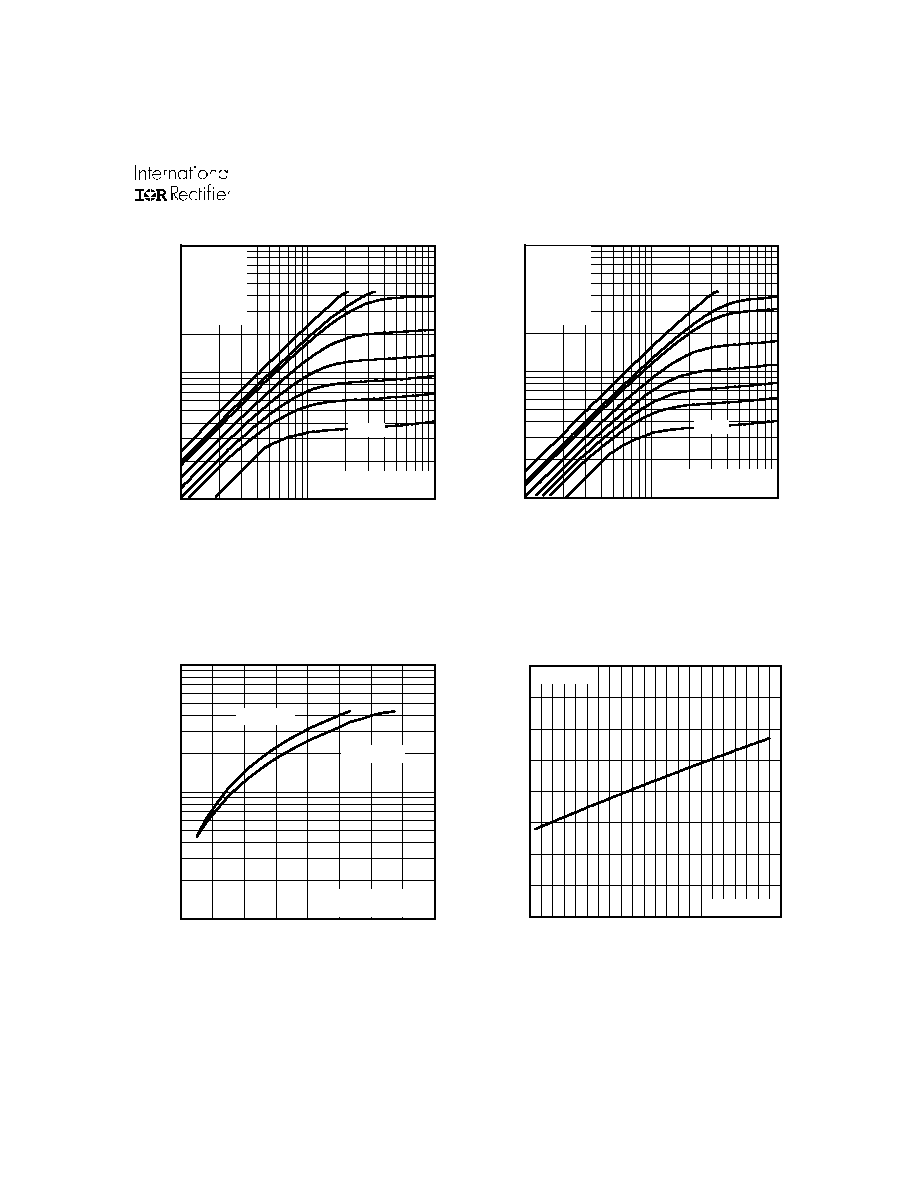
IRF7207
www.irf.com
3
Fig 4. Normalized On-Resistance
Vs. Temperature
Fig 2. Typical Output Characteristics
Fig 1. Typical Output Characteristics
Fig 3. Typical Transfer Characteristics
1
10
100
0.1
1
10
20µs PULSE WIDTH
T = 25 C
J
°
TOP
BOTTOM
VGS
-7.00V
-5.00V
-4.50V
-3.50V
-3.00V
-2.70V
-2.50V
-2.25V
-V , Drain-to-Source Voltage (V)
-I , Drain-to-Source Current (A)
DS
D
-2.25V
1
10
100
0.1
1
10
20µs PULSE WIDTH
T = 150 C
J
°
TOP
BOTTOM
VGS
-7.00V
-5.00V
-4.50V
-3.50V
-3.00V
-2.70V
-2.50V
-2.25V
-V , Drain-to-Source Voltage (V)
-I , Drain-to-Source Current (A)
DS
D
-2.25V
1
10
100
2.0
3.0
4.0
5.0
6.0
V = -10V
20µs PULSE WIDTH
DS
-V , Gate-to-Source Voltage (V)
-I , Drain-to-Source Current (A)
GS
D
T = 25 C
J
°
T = 150 C
J
°
-60 -40 -20
0
20
40
60
80 100 120 140 160
0.0
0.5
1.0
1.5
2.0
T , Junction Temperature ( C)
R , Drain-to-Source On Resistance
(Normalized)
J
DS(on)
°
V
=
I =
GS
D
-10V
-5.4A
-4.5V
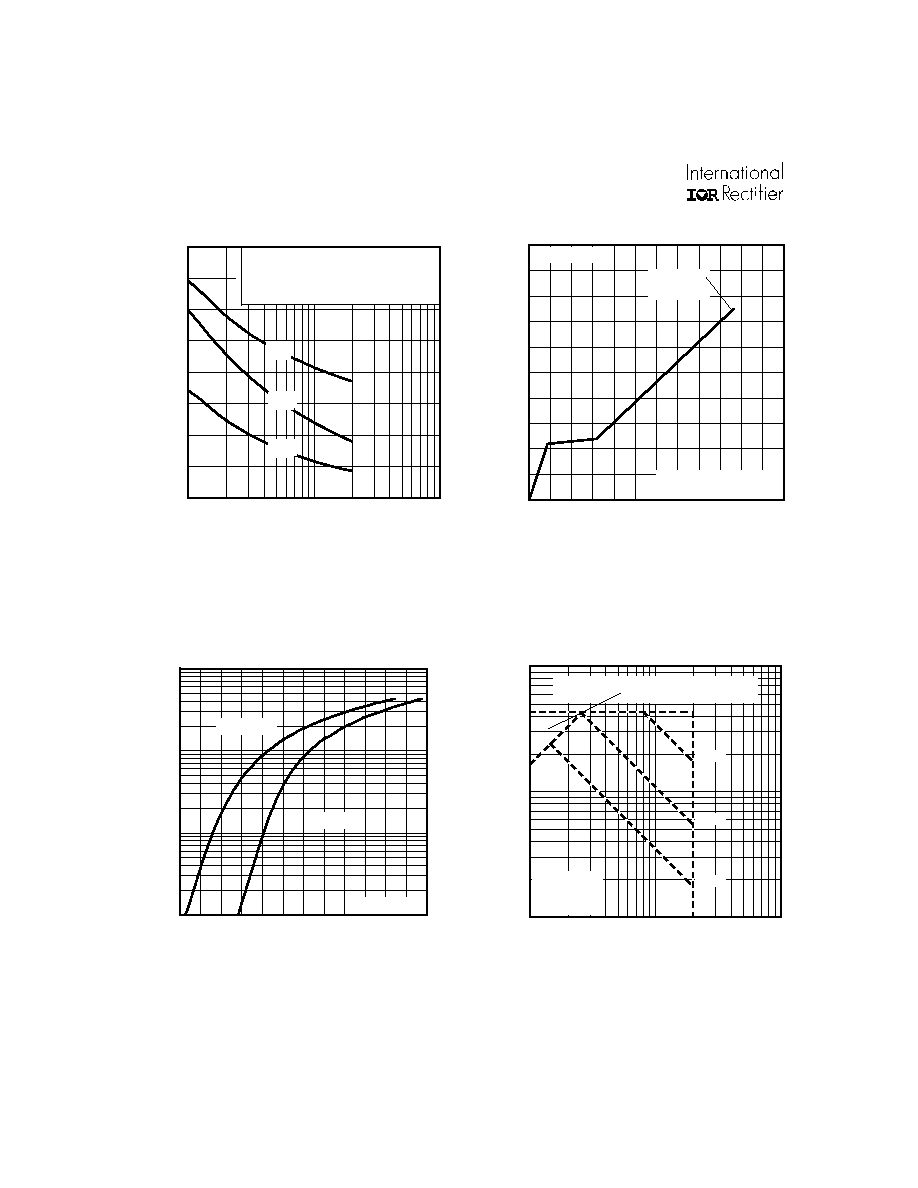
IRF7207
4
www.irf.com
Fig 8. Maximum Safe Operating Area
Fig 6. Typical Gate Charge Vs.
Gate-to-Source Voltage
Fig 5. Typical Capacitance Vs.
Drain-to-Source Voltage
Fig 7. Typical Source-Drain Diode
Forward Voltage
1
10
100
0
400
800
1200
1600
-V , Drain-to-Source Voltage (V)
C, Capacitance (pF)
DS
V
C
C
C
=
=
=
=
0V,
C
C
C
f = 1MHz
+ C
+ C
C SHORTED
GS
iss
gs
gd ,
ds
rss
gd
oss
ds
gd
Ciss
Coss
Crss
0
5
10
15
20
25
30
0
2
4
6
8
10
Q , Total Gate Charge (nC)
-V , Gate-to-Source Voltage (V)
G
GS
FOR TEST CIRCUIT
SEE FIGURE
I =
D
13
-5.4A
V
= -10V
DS
1
10
100
1
10
100
OPERATION IN THIS AREA LIMITED
BY R
DS(on)
Single Pulse
T
T
= 150 C
= 25 C
°
°
J
A
-V , Drain-to-Source Voltage (V)
-I , Drain Current (A)
I , Drain Current (A)
DS
D
100us
1ms
10ms
0.1
1
10
100
0.4
0.6
0.7
0.9
1.1
1.2
1.4
-V ,Source-to-Drain Voltage (V)
-I , Reverse Drain Current (A)
SD
SD
V = 0 V
GS
T = 25 C
J
°
T = 150 C
J
°
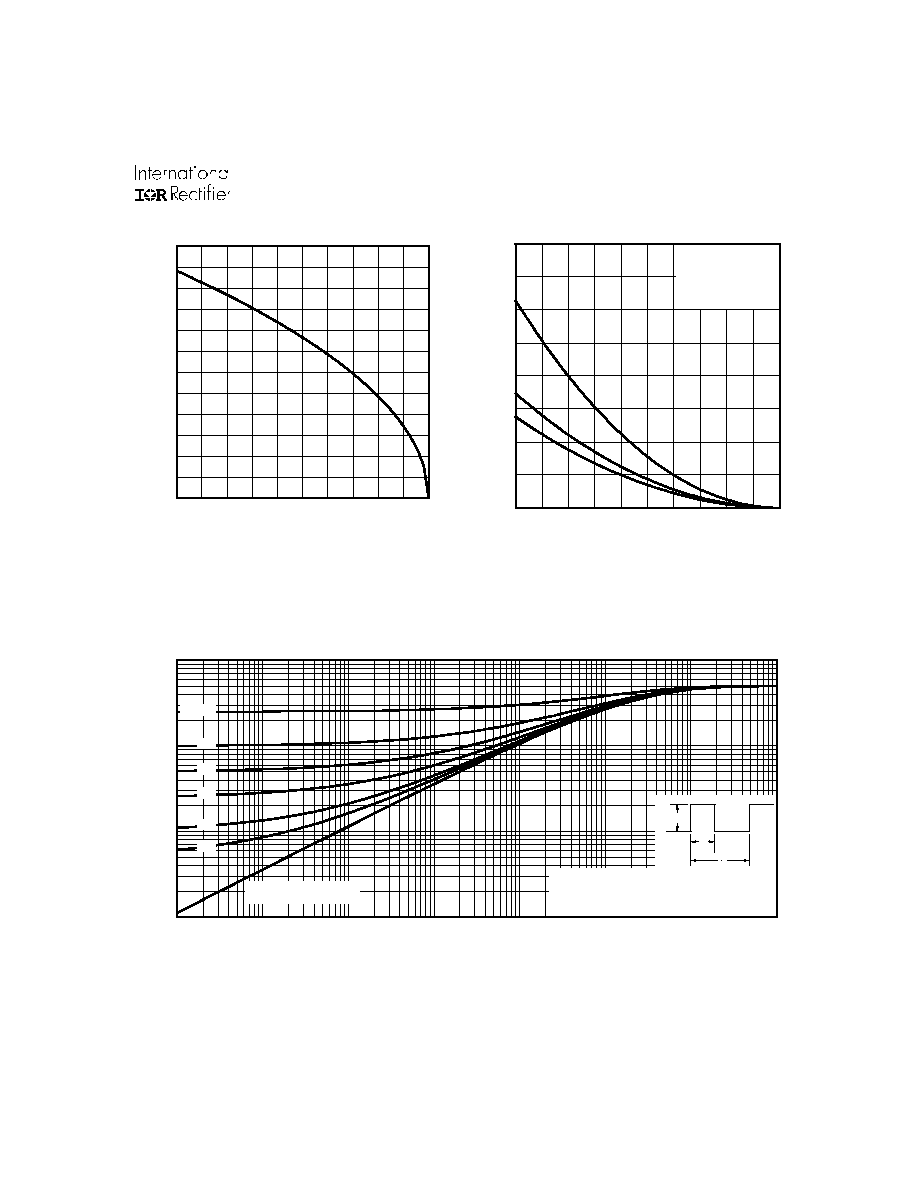
IRF7207
www.irf.com
5
Fig 11. Maximum Effective Transient Thermal Impedance, Junction-to-Ambient
Fig 9. Maximum Drain Current Vs.
Case Temperature
0.1
1
10
100
0.00001
0.0001
0.001
0.01
0.1
1
10
100
Notes:
1. Duty factor D =
t / t
2. Peak T = P
x Z
+ T
1
2
J
DM
thJA
A
P
t
t
DM
1
2
t , Rectangular Pulse Duration (sec)
Thermal Response
(Z )
1
thJA
0.01
0.02
0.05
0.10
0.20
D = 0.50
SINGLE PULSE
(THERMAL RESPONSE)
25
50
75
100
125
150
0.0
1.0
2.0
3.0
4.0
5.0
6.0
T , Case Temperature
( C)
-I , Drain Current (A)
°
C
D
Fig 10. Maximum Avalanche Energy
Vs. Drain Current
25
50
75
100
125
150
0
100
200
300
400
Starting T , Junction Temperature ( C)
E , Single Pulse Avalanche Energy (mJ)
J
AS
°
ID
TOP
BOTTOM
-2.4A
-4.3A
-5.4A




